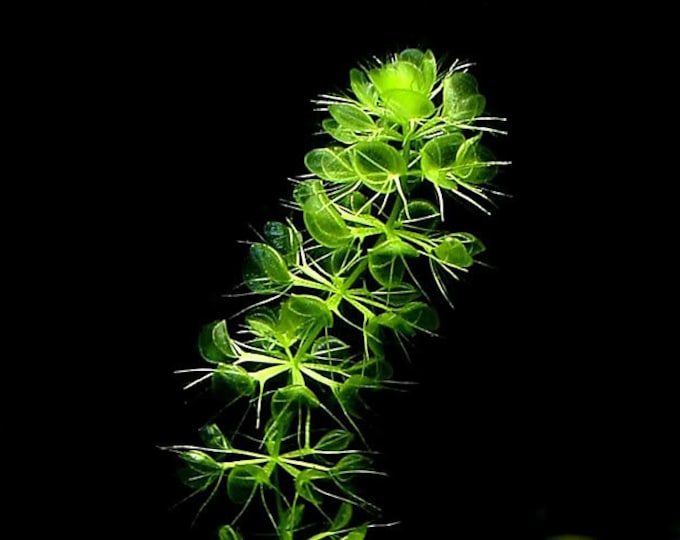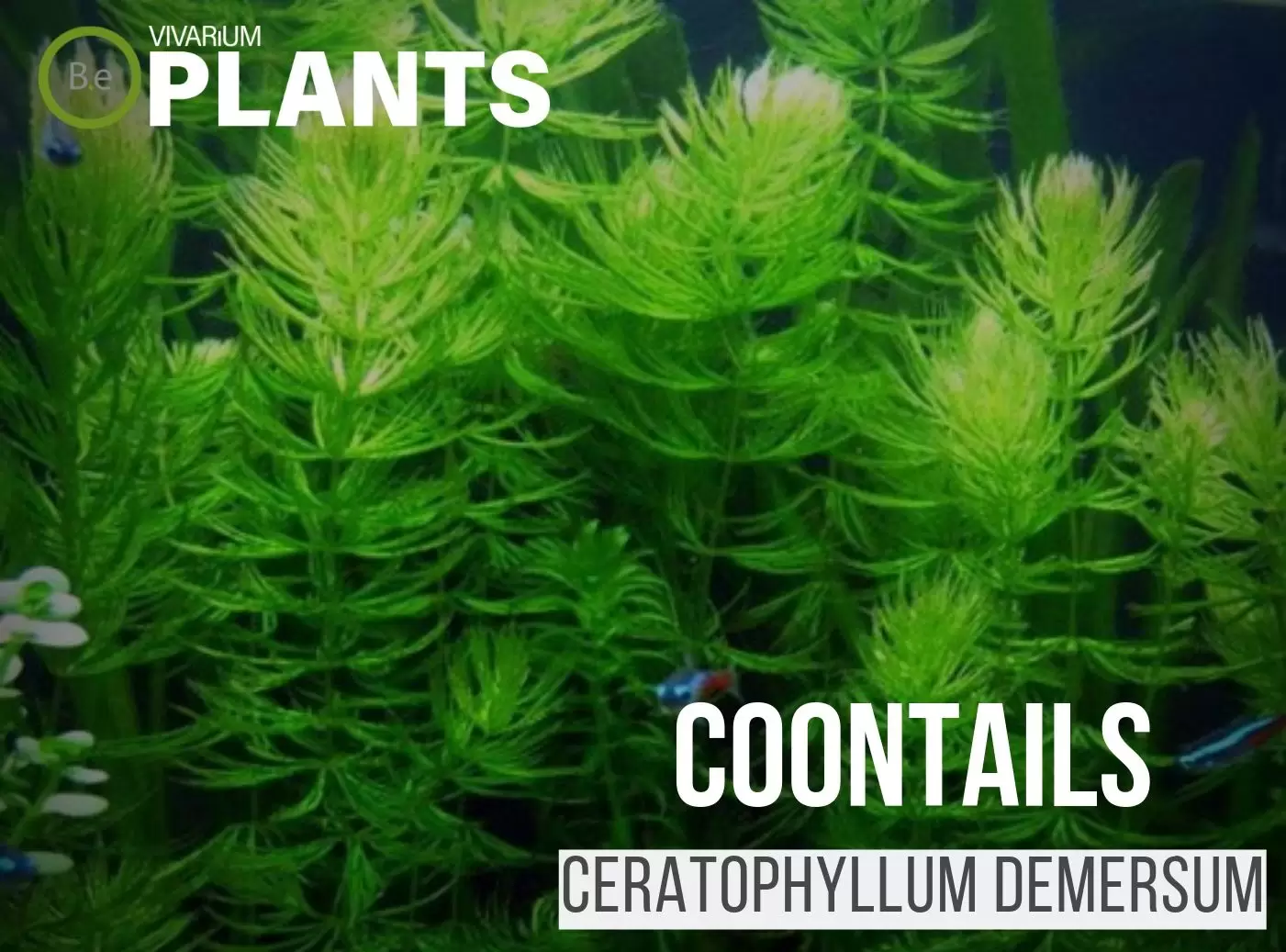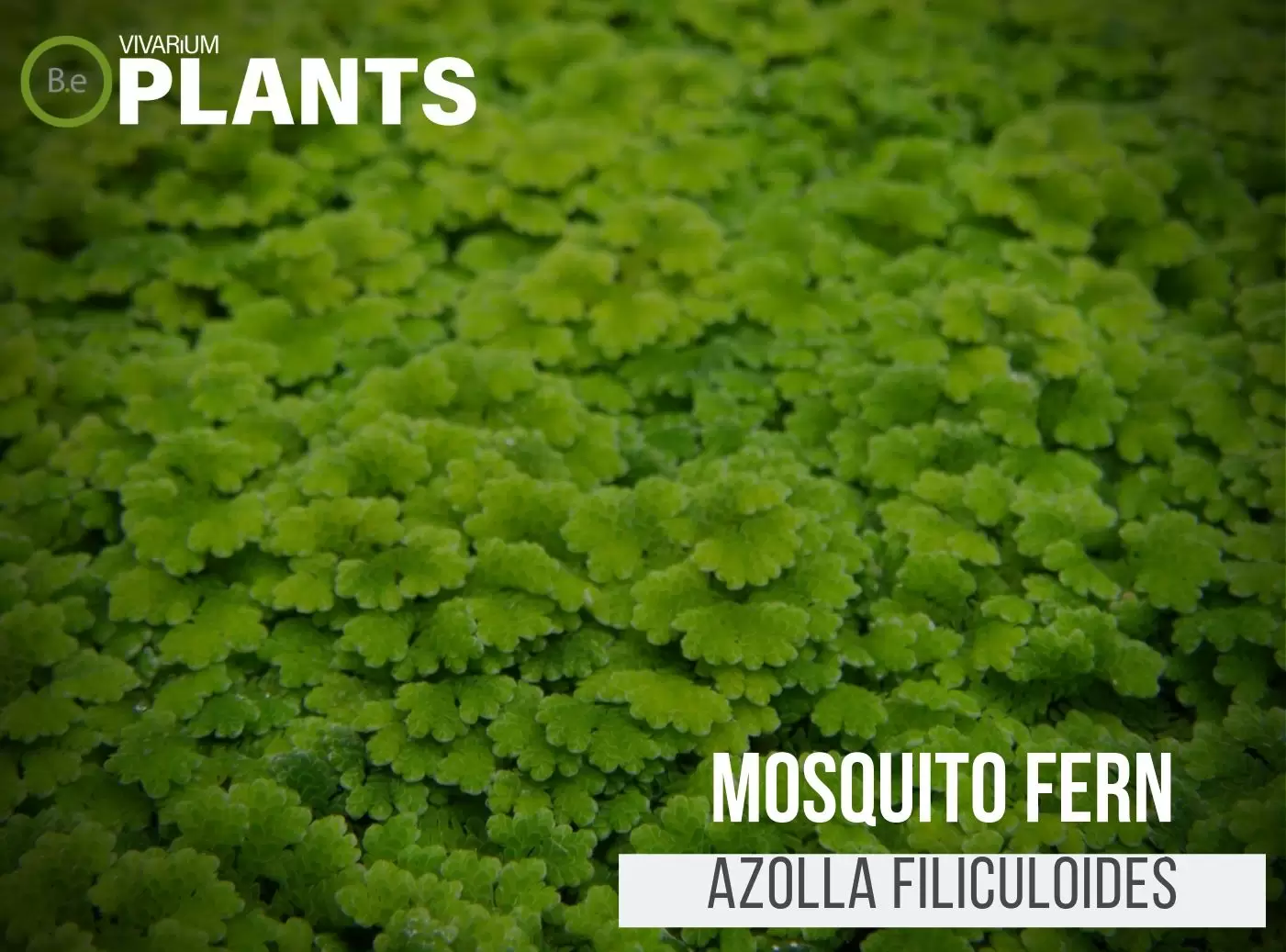The Waterwheel Plant, also called Aldrovanda vesiculosa, is a fascinating floating aquatic plant due to its ability to capture and digest living organisms. This meat-eating aquatic plant is a unique and interesting addition to any carnivorous aquarium setup!
In this article, we will explore the natural habitat, care requirements, and overall benefits of keeping a Waterwheel plant in the aquarium. From its striking appearance to its captivating behavior, keeping a Waterwheel plant in your aquarium can be a rewarding and exciting experience.
| Quick Stats: | |
|---|---|
| Scientific Name | Aldrovanda vesiculosa |
| Common Name | Waterwheel Plant, Waterwheel Sundew, Winged Trap |
| Family Name | Droseraceae |
| Habitat | Temperate freshwater ecosystems |
| Temperature | 68°F – 78°F |
| Height | 2-12 cm |
| pH | 5.0-7.0 |
| Lighting | Bright, Indirect |
What Is A Waterwheel Plant?
Aldrovanda vesiculosa, otherwise known as Waterwheel Plant, is a carnivorous water-borne plant native to temperate regions and freshwater bodies all over the world.
These fast-moving plants capture and digest insects by establishing 5 rotating trap whorls arranged around the central axis of the plant. Each whorl consists of 3-5 leaves, allowing these traps to remain active in their environment.


Waterwheel Plant Facts
Aldrovanda vesiculosa belongs to one of the rare carnivorous plants that inhabit the world today. Its traps work by making an almost “vacuum-like” motion when a prey insect is detected.
When the prey is trapped, the leaves then quickly close around the insect and against the stems, eventually digesting its contents.
Description
Aldrovanda vesiculosa typically grows between 2-12 centimeters in height and is naturally a greenish stem with reddish-brown segments. It has oval-shaped 5-petaled leaves, usually measuring 5 millimeters or so.
Waterwheel plant has extremely thin roots that hold the plant to the substrate and help absorb food with the help of the leaves.
Habitat
The waterwheel plant naturally inhabits freshwater ecosystems of temperate regions around the world. It is usually found in the shallow waters of pools or marshes and in the edges of larger ponds, rivers, or lakes.
This plant is also known to frequently inhabit wetlands or areas that broadcast a significant amount of sunlight.
pH Preference
Aldrovanda vesiculosa does best when kept in a moderately acidic environment (5-7 pH) although it can tolerate slightly higher pH levels as well.
Vivarium Type
A Waterwheel Plant does best in a variety of aquatic vivarium setups that has the right environment for it to thrive.
Freshwater aquariums are a popular option for the Waterwheel Plant, as they provide it with a steady source of swirling water which allows the plant to properly spread its lobes and feed on prey.
Paludariums are another type of vivarium that can accommodate a Waterwheel Plant as long as the water conditions in the tank remain stable and not overly acidic.
The same is true for ripariums, which are smaller aquatic systems with live plants partially immersed in water and the majority of the plant‘s foliage exposed to the air.
With the right environment, a Waterwheel Plant can easily be incorporated into any of these vivariums.
Vivarium Placement
Because of its adapted shape and floating nature, Waterwheel Plant is most commonly found in the mid-surface region of a vivarium tank.
This plant performs best when provided with adequate lighting and water that’s not too cool or hot.
Waterwheel Plant does not thrive in acidic water conditions and should be given a variety of liquid nutrients throughout the course of their development.
Substrate
Waterwheel plants do not require a substrate or rooting system because they do not absorb nutrients through their roots.
Instead, they rely on their leaves to absorb food and oxygen. The substrate used should consist of fine sand, pea gravel, or any other plant-friendly aquatic soil.
Lighting
Aldrovanda vesiculosa requires high voltage lighting which mimics that of its natural environment.
Aquatic lights should be placed inside the enclosure and given either direct or indirect sunlight.
Place the lights at the top while the Waterwheel plant floats in the mid-part of the vivarium.
Water Requirements
Waterwheel Plants are native to slow–moving bodies of water, meaning that the aquarium in which it is kept should closely resemble the plant‘s natural habitat.
An ideal water temperature for the Waterwheel Plant is between 73–79° F (23–26° C). The water should also be free of chlorine or chloramines, as this can lead to stunted growth or prevent it from producing its lobed traps.
Lastly, the water should remain alkaline, with a pH level between 7.0 and 8.0. When all of these requirements are met, the Waterwheel Plant is sure to thrive in its aquatic environment.
Flowering
Though a Waterwheel Plant typically flowers in its natural habitat, they rarely flower in captivity. This is because they need certain lighting and water conditions in order to flower, and they often do not get this in the home aquarium.
That being said, with the right environment, a Waterwheel Plant can and will flower regularly. The flowers are small and greenish-yellow, and they are located near the end of the stems.
When the flower blooms, it will release its pollen into the atmosphere, where it is then spread around the aquarium or vivarium.
If your Waterwheel Plant does flower, it is a sign that it is receiving the proper care and environment needed to thrive.
Buy Waterwheel Plant
Before buying a Waterwheel Plant, thoroughly inspect the foliage for any discoloration, drying, black spots, or damage.
Be sure to look for any signs of pests or fungal diseases. If the plant appears to be in poor condition, it may struggle to adapt to a new home.
Remember to click the image below for more information on the current price and other relevant details about the Aldrovanda vesiculosa:
Waterwheel Plant Care and Propagation
Waterwheel plants, like most carnivorous plants, are sensitive vegetation and require a specific care plan.
While these plants are relatively easy to propagate given their delicacies, they also have some specific needs when it comes to their environment.
How to grow
To successfully propagate Waterwheel plants, begin by gently dividing them using a sharp knife.
Take small individual segments and create new pieces. Make sure to keep the new pieces wet until they can float on water.
They will then slightly attach themselves to a nearby substrate and slowly grow in their environment.
Plants Similar To Waterwheel Plant
Incorporating a variety of plants in your enclosure can enhance its appearance. To achieve a diverse and visually appealing setup, consider including different types of flora that are compatible with the same habitat.
If you are having difficulty obtaining this plant or want to explore alternatives to Waterwheel Plant, there are other aquatic plants that may thrive alongside or in place of it in your vivarium:
Conclusion
Waterwheel Plant is an incredibly interesting aquatic plant that makes a great addition to many vivariums. They have a unique shape and motion that can really bring a sense of liveliness to any watery tank.
Though these plants require a specific care plan, they are relatively easy to maintain and propagate given their sensitivities. With patience and adequate light, Waterwheel plants can provide an interesting backdrop to any aquatic setup.
Frequently Asked Questions
The waterwheel plant (Aldrovanda vesiculosa) is a carnivorous species that eats small aquatic organisms, such as mosquito larvae, water fleas, and snails.
No, the Waterwheel Plant (Aldrovanda Vesiculosa) is not an invasive species. In fact, it is considered endangered or vulnerable in many regions.
The waterwheel plant is endangered due to habitat loss, climate change, and overcollection of the plant species.
Aldrovanda vesiculosa can be found in ponds, ditches, and slow–moving streams in Europe, Asia, Australia, and North and South America.
To feed Aldrovanda, provide small aquatic invertebrates such as mosquito larvae, daphnia, or brine shrimp.
The water wheel plant (Aldrovanda vesiculosa) is a carnivorous aquatic plant native to shallow ponds and streams in Europe, Africa, and Asia. It is one of the few truly carnivorous aquatic plants and has an unusual, wheel–like shape. The carnivorous traps of these plants are used to catch and digest small aquatic invertebrates such as mosquito larvae, snails, and tadpoles.




